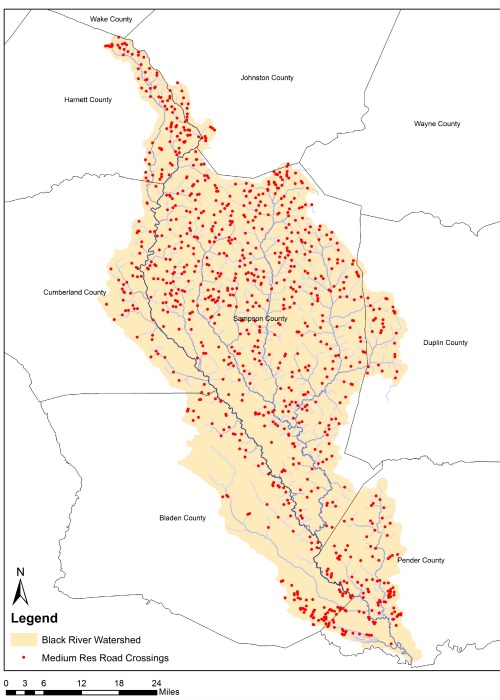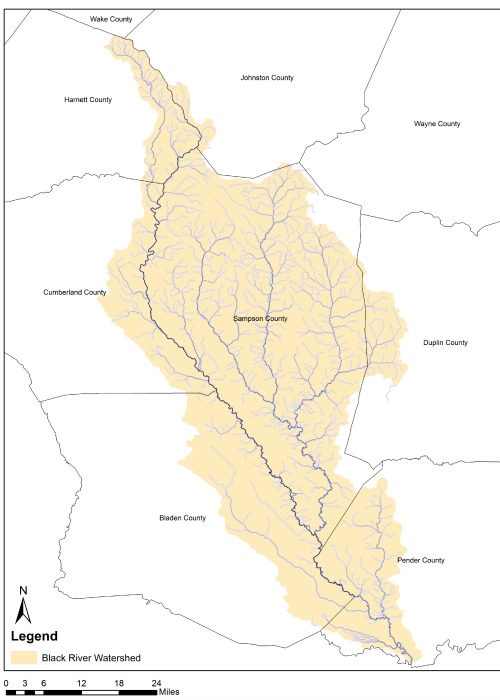Cape Fear Resource Conservation and Development recently received a $130,000 grant from the National Fish and Wildlife Foundation and $50,000 from Bladen County to assess, rank, and prioritize 200 culverts and barriers for removal and/or restoration in the lower Black River Basin, a Tier 1 conservation priority of the Cape Fear River basin due to the presence of multiple Species of Greatest Conservation Need. Based on the results of scoring the culverts through the Southeast Aquatic Resources Partnership (SARP) Barrier Prioritization Tool, up to five barriers will be groundtruthed, evaluated for feasibility, and preliminary engineering design and construction estimates developed for future funding acquisition and implementation by the project team.
As a result of several years of collaboration within the Cape Fear River Partnership Dam Removal Subgroup, the proposed project of assessing aquatic connectivity in the Black River has been developed in coordination with CFRC&D, SARP, and the Cape Fear River Partnership Coordinator. Based on feedback from local governments, state and federal resource agencies, the NC Wildlife Action Plan and general lack of data, it was determined to initiate the SARP standardized protocol to assess fish passability and condition at over 200 road stream crossings in the lower Black River Basin.
The protocol to be used was originally developed by the North Atlantic Aquatic Connectivity Collaborative protocol, and tailored to the Southeast by SARP. It outlines various measurements and assessments to be collected at each site that will then be used to determine if the crossing is passable to critical freshwater aquatic species (including but not limited to the Broadtail Madtom) and risk of habitat degradation. In order to accurately use the protocol and enter data into the Barrier database, project team members will attend a 3 day training facilitated by SARP (March 27 – 29, 2018).
Based on the results of scoring the culverts through the Barrier Prioritization Tool, up to five barriers will be groundtruthed, evaluated for feasibility, and preliminary engineering design and construction estimates developed for future funding acquisition and implementation by the project team.








